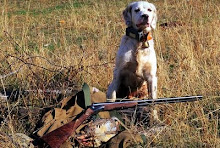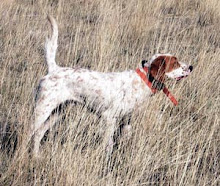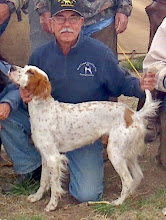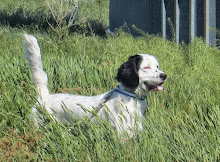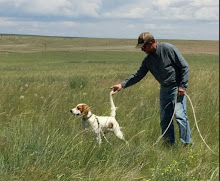There has been much disinformation spread by proponents of spay and neuter as a method of population control, with claimed health benefits. Many vets also recommend the procedure, claiming health benefits without explaining (or necessarily understanding) the negative risk factors. Many adoption agreements require that a pup be altered by the age of six months.
This is a decision that should be left to the owner, and a good vet will understand and explain both the positive and negative aspects of spaying or neutering your dog, rather than proactively recommending it as standard procedure.
The following was forwarded to me by Dr. Charles Hjerpe DVM, Emeritus Professor of Veterinary Medicine at the University of California, Davis, School of Veterinary Medicine. It does not address the demonstrated behavioral issues that have been seen in neutered or spayed dogs, which should also be considered.
-------------
At some point, most of us with an interest in dogs will have to consider whether or not to spay/neuter our pet. Tradition holds that the benefits of doing so at an early age outweigh the risks. Often, tradition holds sway in the decision-making process even after countervailing evidence has accumulated.
Ms. Sanborn has reviewed the veterinary medical literature in an exhaustive and scholarly treatise, attempting to unravel the complexities of the subject. More than 50 peer-reviewed papers were examined to assess the health impacts of spay / neuter in female and male dogs, respectively. One cannot ignore the findings of increased risk from osteosarcoma, hemangiosarcoma, hypothyroidism, and other less frequently occurring diseases associated with neutering male dogs. It would be irresponsible of the veterinary profession and the pet owning community to fail to weigh the relative costs and benefits of neutering on the animal’s health and well-being. The decision for females may be more complex, further emphasizing the need for individualized veterinary medical decisions, not standard operating procedures for all patients.
No sweeping generalizations are implied in this review. Rather, the author asks us to consider all the health and disease information available as individual animals are evaluated. Then, the best decisions should be made accounting for gender, age, breed, and even the specific conditions under which the long-term care, housing and training of the animal will occur.
This important review will help veterinary medical care providers as well as pet owners make informed decisions. Who could ask for more?
Larry S. Katz, PhD
Associate Professor and Chair
Animal Sciences
Rutgers University
New Brunswick, NJ 08901
INTRODUCTION
Dog owners in America are frequently advised to spay/neuter their dogs for health reasons. A number of health benefits are cited, yet evidence is usually not cited to support the alleged health benefits.
When discussing the health impacts of spay/neuter, health risks are often not mentioned. At times, some risks are mentioned, but the most severe risks usually are not.
This article is an attempt to summarize the long-term health risks and benefits associated with spay/neuter in dogs that can be found in the veterinary medical literature. This article will not discuss the impact of spay/neuter on population control, or the impact of spay/neuter on behavior.
Nearly all of the health risks and benefits summarized in this article are findings from retrospective epidemiological research studies of dogs, which examine potential associations by looking backwards in time. A few are from prospective research studies, which examine potential associations by looking forward in time.
SUMMARY
An objective reading of the veterinary medical literature reveals a complex situation with respect to the long- term health risks and benefits associated with spay/neuter in dogs. The evidence shows that spay/neuter correlates with both positive AND adverse health effects in dogs. It also suggests how much we really do not yet understand about this subject.
On balance, it appears that no compelling case can be made for neutering most male dogs, especially immature male dogs, in order to prevent future health problems. The number of health problems associated with neutering may exceed the associated health benefits in most cases.
On the positive side, neutering male dogs
• Eliminates the small risk (probably <1%)
• Reduces the risk of non-cancerous prostate disorders
• Reduces the risk of perianal fistulas
• May possibly reduce the risk of diabetes (data inconclusive)
On the negative side, neutering male dogs
• If done before 1 year of age, significantly increases the risk of osteosarcoma (bone cancer); this is a common cancer in medium/large and larger breeds with a poor prognosis.
• Increases the risk of cardiac hemangiosarcoma by a factor of 1.6
• Triples the risk of hypothyroidism
• Increases the risk of progressive geriatric cognitive impairment
• Triples the risk of obesity, a common health problem in dogs with many associated health problems
• Quadruples the small risk (<0.6%)
• Doubles the small risk (<1%)
• Increases the risk of orthopedic disorders
• Increases the risk of adverse reactions to vaccinations
For female dogs, the situation is more complex. The number of health benefits associated with spaying may exceed the associated health problems in some (not all) cases. On balance, whether spaying improves the odds of overall good health or degrades them probably depends on the age of the female dog and the relative risk of various diseases in the different breeds.
On the positive side, spaying female dogs
• If done before 2.5 years of age, greatly reduces the risk of mammary tumors, the most common malignant tumors in female dogs
• Nearly eliminates the risk of pyometra, which otherwise would affect about 23% of intact female dogs; pyometra kills about 1% of intact female dogs
• Reduces the risk of perianal fistulas
• Removes the very small risk (≤0.5%) from uterine, cervical, and ovarian tumors
On the negative side, spaying female dogs
• If done before 1 year of age, significantly increases the risk of osteosarcoma (bone cancer); this is a common cancer in larger breeds with a poor prognosis
• Increases the risk of splenic hemangiosarcoma by a factor of 2.2 and cardiac hemangiosarcoma by a factor of>5; this is a common cancer and major cause of death in some breeds
• Triples the risk of hypothyroidism
• Increases the risk of obesity by a factor of 1.6-2, a common health problem in dogs with many associated health problems
• Causes urinary “spay incontinence” in 4-20% of female dogs
• Increases the risk of persistent or recurring urinary tract infections by a factor of 3-4
• Increases the risk of recessed vulva, vaginal dermatitis, and vaginitis, especially for female dogs spayed before puberty
• Doubles the small risk (<1%)>
• Increases the risk of adverse reactions to vaccinations
One thing is clear – much of the spay/neuter information that is available to the public is unbalanced and contains claims that are exaggerated or unsupported by evidence. Rather than helping to educate pet owners, much of it has contributed to common misunderstandings about the health risks and benefits associated of spay/neuter in dogs.
The traditional spay/neuter age of six months as well as the modern practice of pediatric spay/neuter appear to predispose dogs to health risks that could otherwise be avoided by waiting until the dog is physically mature, or perhaps in the case of many male dogs, foregoing it altogether unless medically necessary.
The balance of long-term health risks and benefits of spay/neuter will vary from one dog to the next. Breed, age, and gender are variables that must be taken into consideration in conjunction with non-medical factors for each individual dog. Across-the-board recommendations for all pet dogs do not appear to be supportable from findings in the veterinary medical literature.
.jpg) NC 3X CH Johnny Crockett with his trainer/handler W. C. Kirk.
NC 3X CH Johnny Crockett with his trainer/handler W. C. Kirk. Note: Though I posted a bit on this gun earlier this year, I thought to fill in a little more background...
Note: Though I posted a bit on this gun earlier this year, I thought to fill in a little more background...
 This little gun (about 5-1/2 lbs.) is fun to carry and shoot, and has accounted for a number of doves and quail. It is 'right' for me. I thank Dennis, Sam, Pete, and Gary for their usual excellent work in resurrecting a fine old gun for another 100 plus years of service.
This little gun (about 5-1/2 lbs.) is fun to carry and shoot, and has accounted for a number of doves and quail. It is 'right' for me. I thank Dennis, Sam, Pete, and Gary for their usual excellent work in resurrecting a fine old gun for another 100 plus years of service. 

